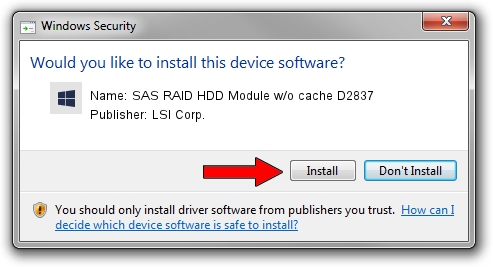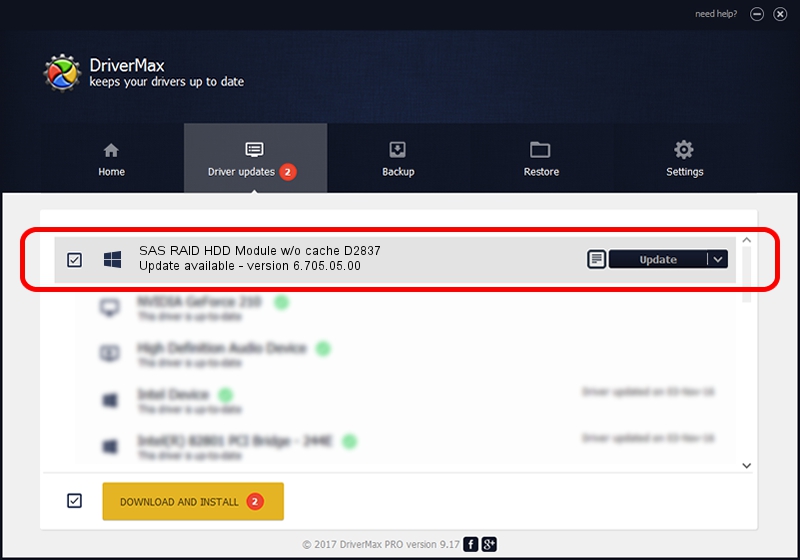
Advertising seems to be blocked by your browser.
The ads help us provide this software and web site to you for free.
Please support our project by allowing our site to show ads.
Home /
Manufacturers /
LSI Corp. /
SAS RAID HDD Module w/o cache D2837 /
PCI/VEN_1000&DEV_005B&SUBSYS_11D51734 /
6.705.05.00 Aug 14, 2014
Driver for LSI Corp. SAS RAID HDD Module w/o cache D2837 - downloading and installing it
SAS RAID HDD Module w/o cache D2837 is a SCSI Adapter device. This Windows driver was developed by LSI Corp.. The hardware id of this driver is PCI/VEN_1000&DEV_005B&SUBSYS_11D51734.
1. LSI Corp. SAS RAID HDD Module w/o cache D2837 - install the driver manually
- Download the setup file for LSI Corp. SAS RAID HDD Module w/o cache D2837 driver from the link below. This is the download link for the driver version 6.705.05.00 released on 2014-08-14.
- Start the driver setup file from a Windows account with administrative rights. If your UAC (User Access Control) is running then you will have to accept of the driver and run the setup with administrative rights.
- Go through the driver installation wizard, which should be quite straightforward. The driver installation wizard will analyze your PC for compatible devices and will install the driver.
- Shutdown and restart your computer and enjoy the new driver, as you can see it was quite smple.
This driver was rated with an average of 3 stars by 40390 users.
2. Using DriverMax to install LSI Corp. SAS RAID HDD Module w/o cache D2837 driver
The most important advantage of using DriverMax is that it will install the driver for you in the easiest possible way and it will keep each driver up to date. How easy can you install a driver using DriverMax? Let's follow a few steps!
- Start DriverMax and press on the yellow button named ~SCAN FOR DRIVER UPDATES NOW~. Wait for DriverMax to analyze each driver on your PC.
- Take a look at the list of driver updates. Scroll the list down until you locate the LSI Corp. SAS RAID HDD Module w/o cache D2837 driver. Click the Update button.
- Finished installing the driver!

Jun 20 2016 12:48PM / Written by Daniel Statescu for DriverMax
follow @DanielStatescu


